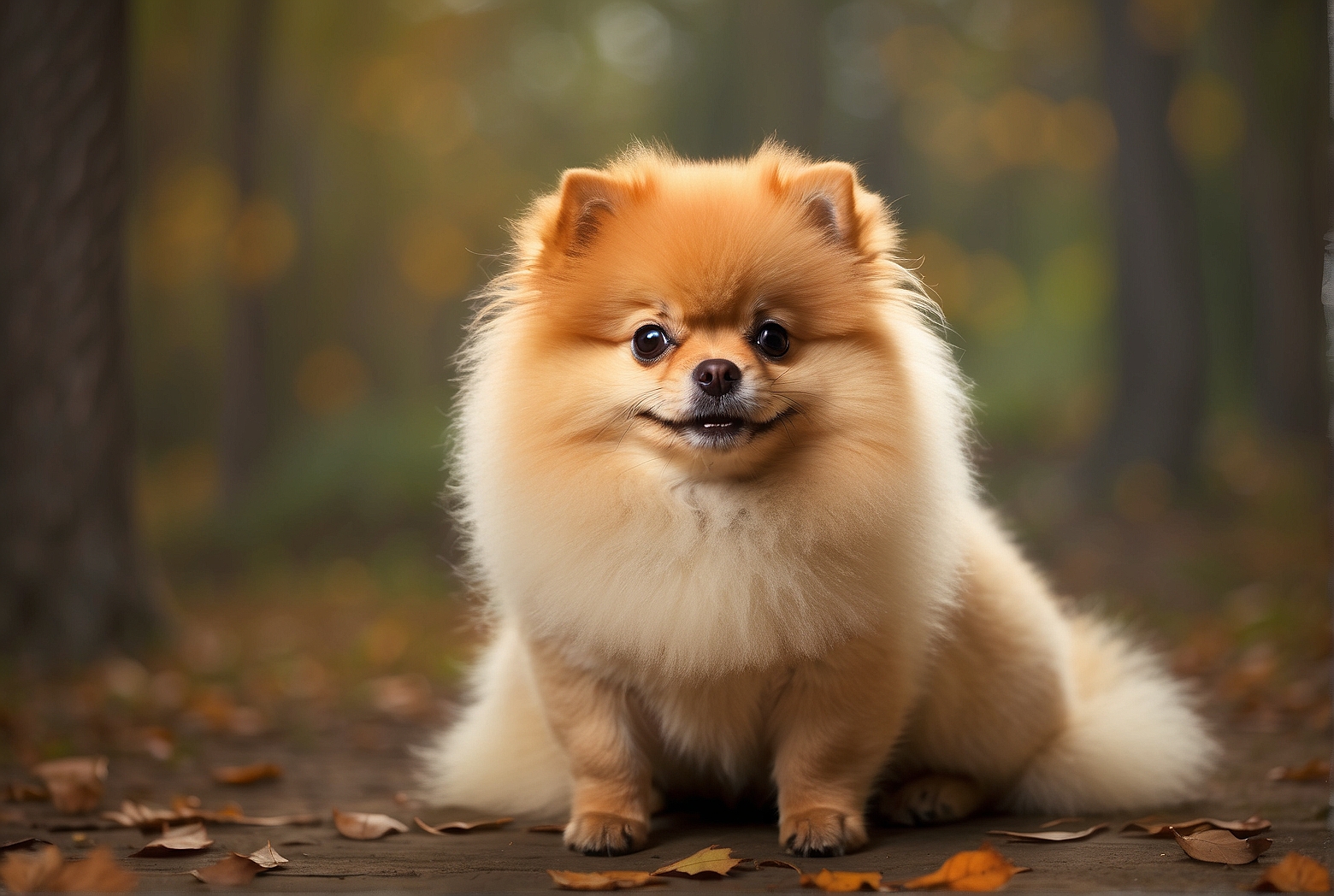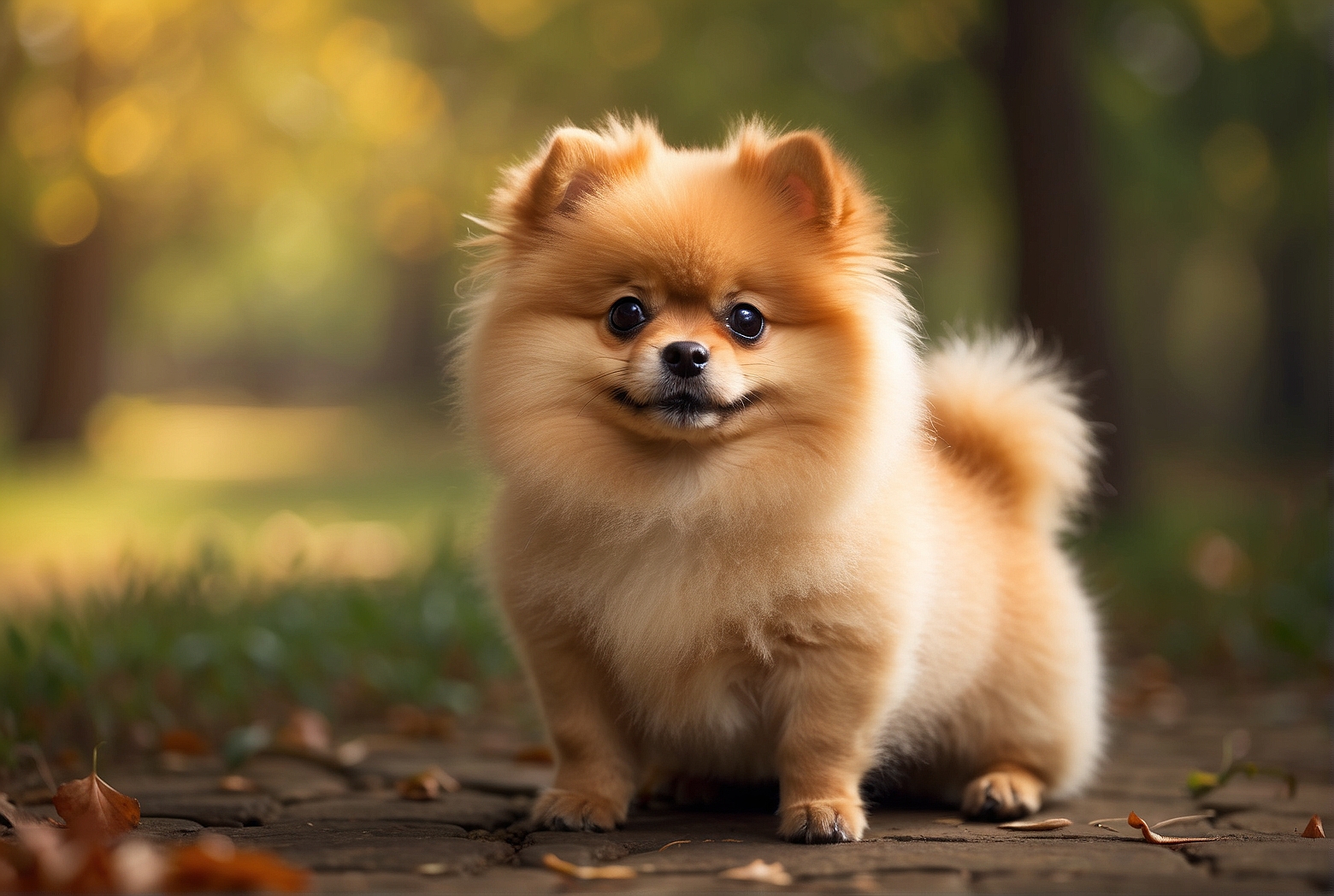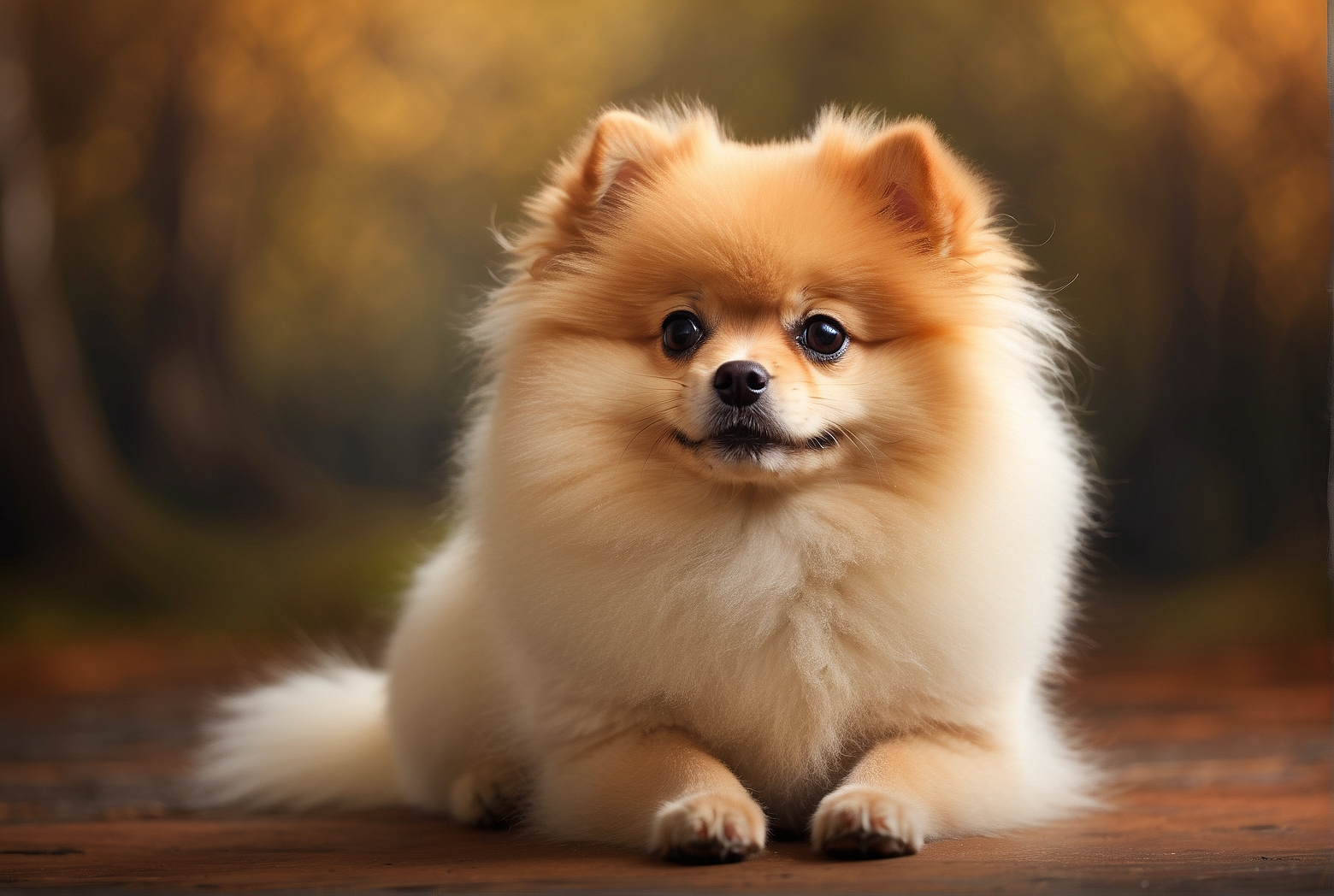If you’re a dog lover, then you’re probably familiar with the irresistibly adorable Pomeranian breed. But did you know that there are actually several different varieties of Pomeranians? From the classic Teddy Bear to the exotic Merle, each type of Pomeranian brings its own unique charm to the table. In this article, we’ll take a closer look at the common Pomeranian breeds and explore the delightful variations that make this breed so popular among dog enthusiasts. So, get ready to discover all the fascinating details about these irresistibly cute and cuddly companions!
Pomeranian Breed Overview
Pomeranians are a popular and beloved breed of toy dogs known for their small size, distinct appearance, and friendly demeanor. Originating in Europe, these adorable dogs have a rich history and come in various sizes and coat colors. Whether you’re considering getting a Pomeranian as a pet or simply want to learn more about this fascinating breed, this comprehensive article will provide you with all the information you need.
1. Origin and History of Pomeranian Breeds
1.1 Origins in Europe
The Pomeranian breed has its roots in the Pomerania region, which was located in present-day Poland and Germany. These small dogs were descendants of large sled-pulling and working dogs, such as the Samoyed and the Norwegian Elkhound. Over time, selective breeding resulted in the miniaturization of these dogs, and they became the Pomeranians we know today.
1.2 Popularity in England
Pomeranians gained significant popularity in England during the 18th century when Queen Victoria expressed her admiration for the breed and owned several Poms herself. Queen Victoria’s love for these dogs sparked a trend, and Pomeranians quickly became fashionable pets among the upper class. Their popularity continued to grow, and they were eventually recognized as a distinct breed by various kennel clubs.
1.3 Introduction in the United States
Pomeranians made their way to the United States during the 19th century. American breeders were initially drawn to the breed’s adorable appearance and vibrant personality. As Pomeranians became more prevalent in the U.S., their popularity soared, and they eventually became one of the most beloved toy breeds in the country.
2. Appearance and Size Varieties
Pomeranians come in a range of sizes, from toy to standard, allowing potential owners to choose the size that best suits their preferences and living arrangements.

2.1 Toy Pomeranians
Toy Pomeranians are the smallest of the breed, weighing between 3 and 7 pounds (1.4 to 3.2 kilograms). They have a compact body and a luxurious double coat that adds to their adorable appearance. Despite their tiny size, toy Pomeranians are known for their outgoing personalities and enthusiastic energy.
2.2 Miniature Pomeranians
Miniature Pomeranians fall between the toy and standard varieties in terms of size and weight. They typically weigh between 7 and 12 pounds (3.2 to 5.4 kilograms). Like toy Pomeranians, they have a plush double coat that requires regular grooming. Miniature Pomeranians are known for their lively and friendly nature, making them wonderful companions.
2.3 Standard Pomeranians
Standard Pomeranians are the largest of the breed, weighing between 12 and 16 pounds (5.4 to 7.3 kilograms). Despite their larger size, they still possess the distinctive Pomeranian characteristics, including a profuse double coat and a lively personality. Standard Pomeranians are energetic and intelligent dogs that thrive in active households.
3. Coat Colors and Patterns
One of the most striking features of Pomeranians is their diverse range of coat colors and patterns. Depending on their genetic makeup, Pomeranians can exhibit a wide array of stunning coat variations.
3.1 Solid-colored Pomeranians
Solid-colored Pomeranians have a coat that consists of a single solid color. Common solid colors include black, white, cream, orange, and blue. These Pomeranians possess a classic and elegant beauty.
3.2 Parti-colored Pomeranians
Parti-colored Pomeranians are characterized by a coat that consists of two or more distinct colors, such as black and white or brown and cream. The distribution of colors can vary, allowing for unique and eye-catching patterns that make each dog truly one-of-a-kind.

3.3 Sable Pomeranians
Sable Pomeranians have a coat with a base color that ranges from light to dark with black tipping. The coat appears to be in constant transition, creating a stunning and ever-changing appearance. Sable Pomeranians often have a luxurious coat with various hues and shades.
3.4 Merle Pomeranians
Merle Pomeranians have a coat pattern characterized by patches of color on a lighter background. The patches can be irregular in shape and can range in color, creating a captivating mosaic effect. Merle Pomeranians are known for their unique and mesmerizing appearance.
3.5 Bi-colored Pomeranians
Bi-colored Pomeranians have a coat that consists of two distinct colors, usually divided along the body’s midline. The two colors can create a harmonious contrast and add depth to the dog’s overall appearance. Bi-colored Pomeranians are known for their striking visuals.
4. Purebred and Mixed Pomeranian Breeds
Pomeranians come in various purebred and mixed breeds, each with its own set of characteristics and traits. Here, we’ll explore some of the popular purebred and mixed Pomeranian breeds.
4.1 American Pomeranian Club Recognized Breeds
The American Pomeranian Club recognizes several purebred Pomeranian breeds, including the American Eskimo Dog, the Finnish Lapphund, and the Keeshond. These breeds share certain similarities with Pomeranians but also possess unique qualities that make them distinct.
4.2 Unofficial Pomeranian Mixes
There are numerous unofficial Pomeranian mixes that have gained popularity among dog enthusiasts. These mixes often combine the Pomeranian breed with other breeds to create unique and lovable hybrids. Some of the popular Pomeranian mixes include the Pomsky (Pomeranian and Husky mix), Pomapoo (Pomeranian and Poodle mix), Pomchi (Pomeranian and Chihuahua mix), and Pomerat (Pomeranian and Rat Terrier mix).
5. Popular Pomeranian Breeds
While all Pomeranians share common characteristics, some breeds within the Pomeranian family have gained particular popularity and recognition. Let’s take a closer look at some of these popular Pomeranian breeds.
5.1 Teddy Bear Pomeranians
Teddy Bear Pomeranians are a type of toy or miniature Pomeranian known for their irresistibly cute appearance, resembling a small teddy bear. Their fluffy coats, round faces, and sweet expressions make them incredibly endearing and appealing to dog lovers.
5.2 Pomsky (Pomeranian and Husky mix)
The Pomsky is a charming crossbreed between a Pomeranian and a Siberian Husky. They combine the Pomeranian’s small size and playfulness with the Husky’s striking appearance and lively temperament. Pomskies are known for their stunning looks and energetic personalities.
5.3 Pomapoo (Pomeranian and Poodle mix)
The Pomapoo is a delightful crossbreed between a Pomeranian and a Poodle. This mix results in a dog with a hypoallergenic coat, making them an excellent choice for individuals with allergies. Pomapoos are intelligent, affectionate, and make great companions for both individuals and families.
5.4 Pomchi (Pomeranian and Chihuahua mix)
The Pomchi is an adorable mix between a Pomeranian and a Chihuahua. These small dogs inherit the best qualities of both breeds, including their cute looks, spunky personalities, and loyal nature. Pomchis are often described as feisty and spirited companions.
5.5 Pomerat (Pomeranian and Rat Terrier mix)
The Pomerat is a lively crossbreed between a Pomeranian and a Rat Terrier. These energetic dogs possess a playful and curious nature, making them a joy to have around. Pomerats are intelligent and require mental stimulation and physical exercise to thrive.
6. Health and Temperament Considerations
When considering any breed of dog, it’s essential to understand the potential health issues and temperament traits associated with that breed. Here, we’ll discuss some common health issues in Pomeranian breeds and their temperament traits and training requirements.
6.1 Common Health Issues in Pomeranian Breeds
Like all dog breeds, Pomeranians are prone to certain health issues. Some of the common health problems found in Pomeranians include dental issues, luxating patella, tracheal collapse, and eye problems. Regular vet check-ups, proper dental care, and a nutritious diet can help minimize the risk of these health issues.
6.2 Temperament Traits and Training Requirements
Pomeranians are known for their lively and extroverted personalities. They are intelligent, curious, and eager to please their owners. However, they can be a bit stubborn at times, so consistent and positive reinforcement training is essential. Socialization from an early age is also crucial to ensure that Pomeranians grow up to be well-rounded and friendly companions.
7. Pomeranian Breeding and Care
Breeding and caring for Pomeranians require certain considerations to ensure the health and well-being of the dogs. In this section, we’ll discuss responsible breeding practices, grooming needs for Pomeranians, and their exercise and physical activity requirements.
7.1 Responsible Breeding Practices
Responsible Pomeranian breeding involves carefully selecting healthy dogs with desirable traits and breeding them responsibly. It’s crucial to consider the health, temperament, and genetics of the parent dogs to produce healthy and well-balanced puppies. Additionally, ethical breeders prioritize the overall welfare and quality of life of their breeding dogs.
7.2 Grooming Needs for Pomeranians
Pomeranians have a dense double coat that requires regular grooming to maintain its health and appearance. Brushing their coat several times a week is essential to prevent matting and keep them looking their best. Pomeranians also benefit from regular baths, nail trims, and dental care to ensure their overall hygiene.
7.3 Exercise and Physical Activity Requirements
Despite their small size, Pomeranians have plenty of energy and require regular exercise to keep them physically and mentally stimulated. Daily walks, interactive play sessions, and opportunities for socialization are important for their well-being. It’s important to note that Pomeranians can adapt well to apartment living as long as their exercise needs are met.
8. Pomeranian Breed Clubs and Associations
Pomeranian breed clubs and associations provide valuable resources and support for Pomeranian enthusiasts. These clubs offer guidance on breed-specific matters, such as health concerns, responsible breeding practices, and training tips. Some notable Pomeranian breed clubs include the American Pomeranian Club, the Pomeranian Club of Canada, and The Kennel Club (UK).
10. Conclusion
Pomeranians are enchanting, intelligent, and affectionate dogs that make wonderful companions for individuals and families alike. With their small size, vibrant personalities, and distinct appearance, it’s no wonder they have captured the hearts of dog lovers worldwide. Whether you prefer a toy, miniature, or standard Pomeranian, or even opt for one of the popular Pomeranian mixes, this breed offers a wide range of choices. Remember to consider their specific needs, health concerns, and grooming requirements to ensure a happy and fulfilling life for your Pomeranian.
